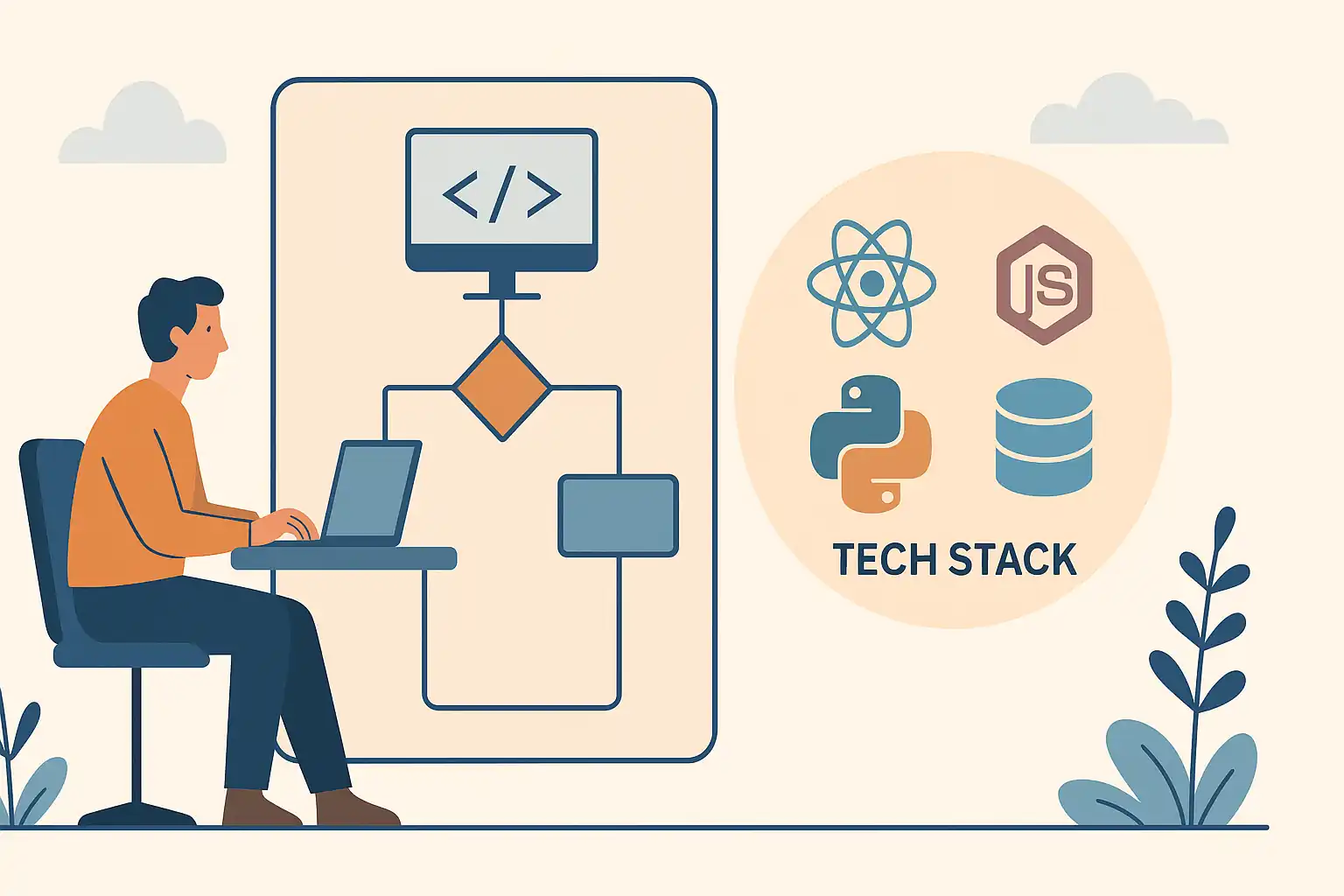
Stack choices shape speed today and cost tomorrow. Pick well and you’ll move fast now without painful rewrites later.
Why your tech stack choice matters
The right stack balances talent availability, maintenance, scalability, cost, and security. Time-to-market and runtime performance also matter. I’ve shipped faster,and avoided refactors,by aligning stack to team skills and near-term goals.
What to evaluate for MVPs
- Team strength & learning curve: use what you know (e.g., TypeScript/JavaScript) to cut ramp time.
- Time to ship: favor mature tools with docs and strong tooling.
- Scalability & change: prefer modular designs and replaceable parts.
- Ecosystem & community: active libraries, help, and hiring pool.
- Performance needs: chat, heavy queries, large uploads may require specific tech.
- Security & reliability: easy auth, validation, and hardened defaults.
Common stacks and when they fit
| Stack / Approach | Best for | Trade-offs |
|---|---|---|
| MERN (Mongo, Express, React, Node) | All-JS teams; web + optional React Native | Great ecosystem; requires discipline for perf & structure |
| Next.js + Node / Serverless | SEO/SSR needs, hybrid static + APIs | Deployment complexity; edge/runtime nuances |
| Flutter / React Native (+ APIs) | Mobile-first iOS + Android with high reuse | Native integrations can add complexity |
| Django / Rails + JS frontend | Backend-heavy domains, strong admin needs | Front-end split can raise integration cost later |
| Serverless / BaaS (Firebase, Supabase, Amplify) | Fastest shipping with minimal infra | Limits & vendor lock-in; pricing at scale |
How I choose in real projects
- Define scope: must-haves vs nice-to-haves; call out realtime/maps/uploads early.
- Match the team: don’t force unfamiliar languages for an MVP.
- Prototype critical flows: e.g., auth + list + write; keep what feels smooth.
- Design for swaps: isolate modules (auth, payments, search) behind interfaces.
- Be honest on lock-in & cost: check pricing/limits for managed services.
Example: for a grocery marketplace MVP, I used MERN + React Native and modularized the backend so payments/chat could be swapped later. In a listings MVP, I used serverless functions for image processing to handle peaks without early server ops.
Actionable next steps
- Sketch key user flows and flag performance hotspots.
- List team competencies and available time.
- Shortlist 1–2 stacks; prototype a core slice.
- Review performance, maintenance effort, security path.
- Choose the stack that ships fastest with room to evolve.
References
- Impala Intech , factors for tech stack selection
- Mobisoft Infotech , time-to-market and performance guidance
- Stack Overflow data analysis on long-term JS usage (arXiv)
- merge.rocks , SaaS MVP stack comparisons
- F22 Labs , aligning stack with skills, scalability, budget
